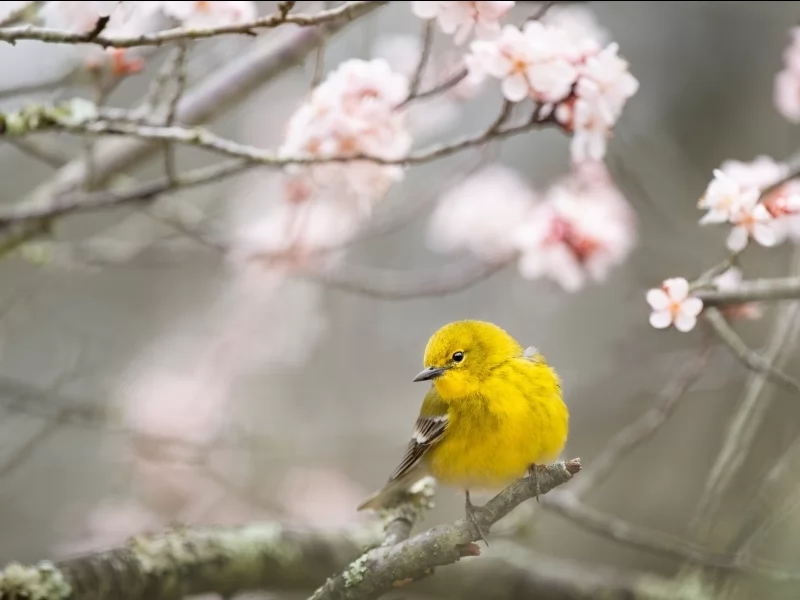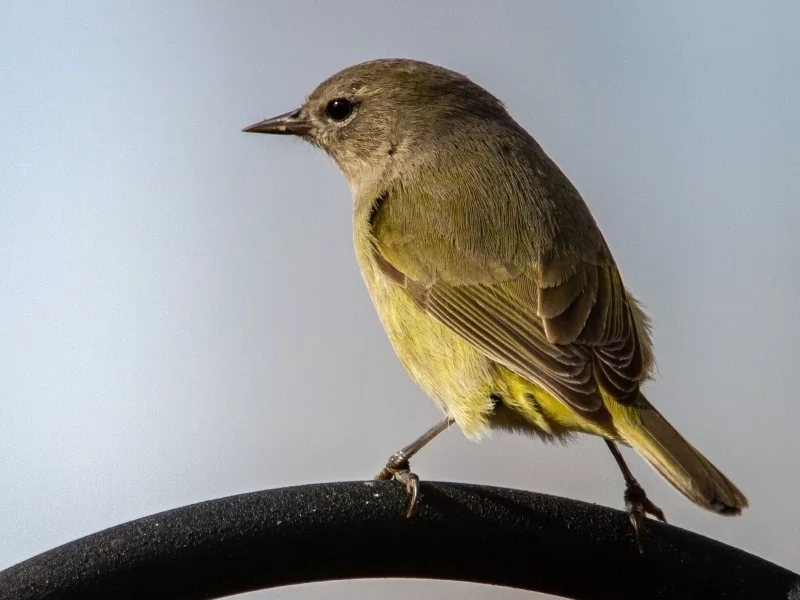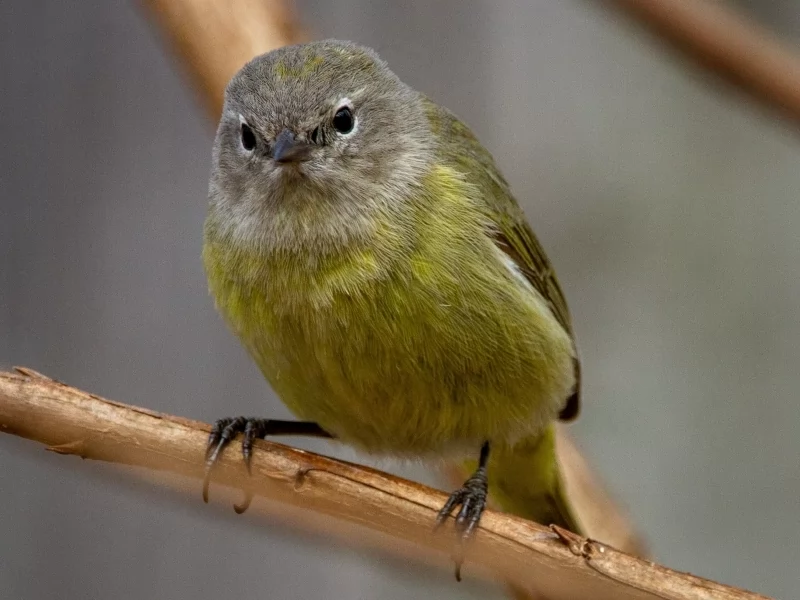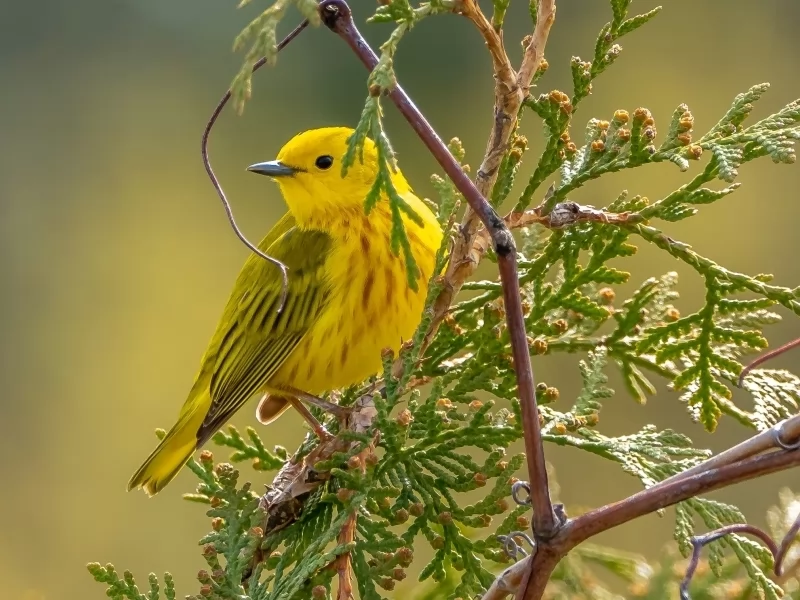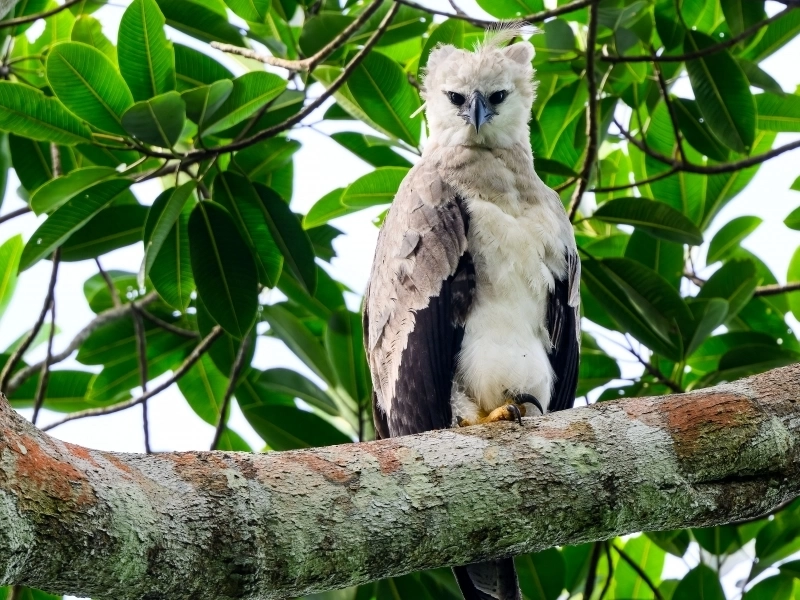News and Testimonials
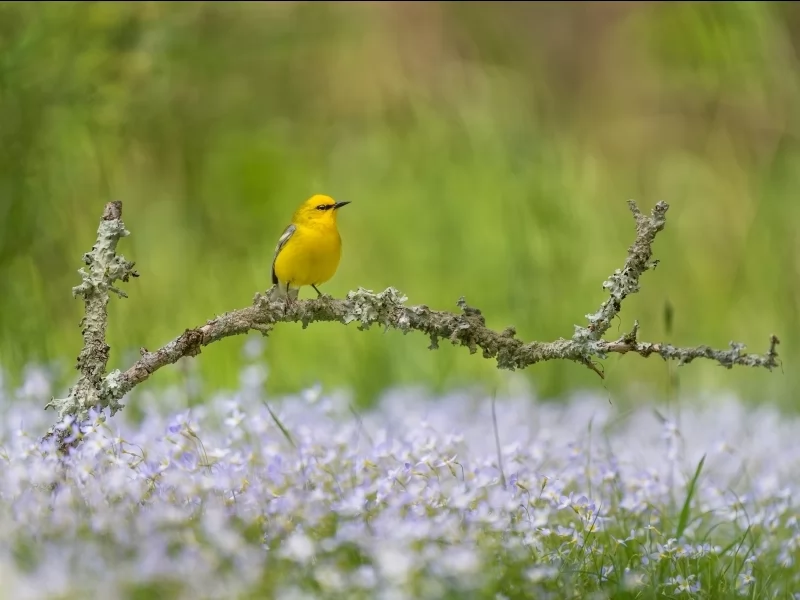
The key to Golden-winged Warbler conservation in North Carolina
Golden-winged Warbler is an eastern songbird that has been in decline for decades throughout its range. Its striking plumage and relative rarity make it popular among birders.
When I lived in western North Carolina, I would make annual birding forays into the hills each spring. My first visits were to a local state park, where I reliably heard the song of a Louisiana Waterthrush that had returned to proclaim its stretch of stream corridor habitat for the summer. Next, I’d venture over to the state wildlife management area, where agency managers added diversity to the forested landscape that included early successional openings that Prairie Warblers found to their liking.
I stopped routinely at the same locations on the Blue Ridge Parkway that Kentucky Warblers and Rose-breasted Grosbeaks occupy, the same sites where Cerulean Warblers can still be found attempting to breed. The last places I visited were always the highest ridges and valleys, where the resident breeders are last to arrive. Among those that can be found at the highest elevations in the corner of the state bordering Tennessee and Virginia is the Golden-winged Warbler, a declining songbird species that requires a diversity of forest structure to meet its needs for the breeding season.
I enjoyed seeing each of the breeding birds that returned each year, providing nourishment for the eyes and ears, beginning with the first Blue-headed Vireo singing in “solitary” fashion (hence its former name). But I’m also guilty of a tendency shared by many who love birds in that I gravitate toward species that are fewer in number or more of a challenge to see. Golden-winged Warbler certainly fits this description as its populations, particularly those in the southern portion of its breeding range, have declined drastically over the past several decades. The species breeds in the Appalachian highlands at elevations above 3,000 feet, mostly from north Georgia to Maine and in much of the Great Lakes region. Habitat loss in the northern portion of its breeding range is as high as 40 percent in some areas.
Needs open areas
Over the last 50 years or so, widespread landscape changes have occurred that are unfavorable for this tiny bird. Golden- wings select breeding sites that are relatively open, such as a regenerating timber cut or an old pasture where forbs and shrubs are well on their way to replacing grasses, sedges, and rushes. Sites may vary from well-drained slopes to wet meadows, but the open character is the common ingredient.
Only a few years ago, it was thought that this was the only habitat structure that was critical for the birds, and the best thing to do when trying to manage for Golden-wings was to continue to enlarge open areas infinitely. A study of juvenile dispersal from nest sites showed that parents led fledglings into nearby mature forest after leaving the nest. The study also revealed that chipmunks were the main predator of the dispersing young.
Observations from other states farther north showed that openings as large as 2,000 acres or more did not have birds occupying the innermost portions, but rather the warblers were primarily found along the periphery. Thus, the boundary between openings and forest had the greatest occupancy. Other studies led by researchers at the University of Tennessee show that scattered small openings in an otherwise contiguous forest unit best satisfy the needs of nesting Golden-wings.
Such findings are consistent with what we know about the natural as well as cultural history of this part of Appalachia. Prior to European settlement, intermittent fires were set intentionally by Native people to enhance the landscape for game species they hunted for food, such as elk and bison. Lightning fires ignited on ridgetops during dry periods, and there were no human suppressors to put them out. For these reasons, openings were likely abundant, and forests were less dense, allowing light penetration that encouraged lush herbaceous growth as well as shrubs that provided a diversity of insect species as well as protective cover.
Since wildfires burned unevenly and were not constrained, openings were randomly created, largely as a function of soil moisture, across large areas. Notably, things probably didn’t change much when the first Europeans displaced Native Americans in the region. Openings were maintained by the grazing of small herds of cattle and sheep that, like their ruminant predecessors, often were not confined by fencing until the invention of barbed wire. Although the frequency of wildfires decreased through time, open areas maintained by subsistence farming were untidy around the edges with a brushy character that likely appealed to nesting Golden-wings. In some areas, residents even burned hillsides to enhance grazing for their cattle, leaving scattered forbs and shrubs that would have provided sufficient nesting substrate to maintain breeding pairs.
An interesting social transformation has taken place over the last several decades in this region of Appalachia that has altered the landscape to the detriment of this now-rare local bird. Fire is almost entirely absent across most of the region, and grazing is more uniform because cattle are confined by fences and stocked at a level that causes most pastures to closely resemble something that one could play golf on — a condition that will not maintain nesting Golden-wings.
If cattle aren’t fenced out of woodland areas, the land becomes substantially altered in terms of its ground cover and shrub layers. Cattle are now owned as an income-generating commodity in large herds, and the amount of farmed land is decreasing while residential developments are on the rise. So, we see farming families joined by retirees and families with a desire to own a second home or vacation property in the Blue Ridge hills. Gated subdivisions have sprung up throughout western North Carolina, from West Jefferson to Asheville and beyond.
Perhaps not surprisingly, this mix of landowners has a variety of views about conservation. Many are reluctant to participate in what they perceive as a regulatory-driven process that could constrain their liberties as property owners. They may be unwilling to make concessions to the appearance of their property, like leaving a shrubby, untidy opening. Or they may resist the idea that cutting trees or doing what is necessary to set back ecological succession is, in fact, beneficial to certain wildlife species, despite what the data says. In the end, an early-successional habitat specialist like the Golden-winged Warbler will only be found where healthy natural forests contain shrubby young openings in which it can nest and rear young.
A chance for dialogue
To do my part as a community scientist, I worked as a seasoned volunteer during breeding bird surveys with Audubon North Carolina’s annual inventory of the Golden-wing population in the border counties where it has historically occurred. After getting oriented and briefed on how to collect survey data, I began visiting sites and interacting with homeowners, including a mix of long-time residents and retirees who had recently bought property in the region.
On survey days, I rose in the pre-dawn hours and drove to sites where warblers were known to have recently occurred or where interested landowners were curious about whether their property might be home to Golden-wings. I would check for the bird’s presence using playback of a recording of a singing male. The technique exploits the sensitivity of territorial male birds to the appearance of a potential rival male competing for a quality territory. If I found the species, an occupying male got to “thump his chest” as the invisible rival mysteriously vanished after only a few minutes of abrupt song.
Accompanying landowners were often mesmerized by the intense response of resident males, and this often created the opportunity for a dialogue about the habitat needs of the species and why birds occupied their property. While most had rudimentary knowledge of the basic habitat requirements as well as concerns about impacts from the increasing number and amount of invasive non-native plant species displacing natives, many were unaware of the changes that had occurred on the landscape in less than a century that are thought to be the primary causes in the decline of the species. Nevertheless, the enthusiasm among some landowners was encouraging, since it’s their decisions that determine whether their property is maintained in a way that appeals to nesting warblers.
Susan Wright and Brent Cochran own a business growing specialty flowers and offering floral services in the northwest mountains of North Carolina — the “high country.” When they learned that their property had residing Golden- wings, they decided to do their part to improve the condition of nesting habitat by using chainsaws and other implements in the winter season to remove large trees and shrubs, setting back succession to the early stage of vegetation favored for nest sites.
“A number of years ago, Curtis Smalling with Audubon North Carolina requested permission to do a study on our property,” Cochran recalls. “Upon completion, he indicated that we had Golden-wings present. Most importantly, he informed us that the species was suffering as a result of habitat decline and that we could help by managing the farm to provide ideal habitat. We happily accepted the challenge.” He and Wright partnered with the U.S. Department of Agriculture’s Natural Resources Conservation Service and the North Carolina Wildlife Resources Commission to develop a long-term management plan.
All but 5 acres of the couple’s 76-acre tract is managed for wildlife habitat. Half is maturing forest, and half is old field/early successional. “We spend a significant amount of time each winter clearing brush on about 3.5 acres per year, leaving small patches of specific trees and shrubs,” Cochran says. “Each year, we move to a different area. Each area transitions from cleared to early succession forest for 10 years. Then we repeat the clearing.” The results of their efforts appear to be paying off. “We are not sure how many Golden-wings are nesting each spring, but we hear them on the farm and occasionally see them, so we know the management is working. It’s great to have the opportunity to see tangible results from our efforts, and we are glad to be able to help our feathered friends.”
In the mountains of Ashe County, April and Ed Temple also own land that is home to Golden-winged Warblers. They are now part of a conservation program through Audubon North Carolina. “Participating in the Working Lands for Wildlife program for Golden- winged Warblers has been an incredibly important and unique experience for our family,” says April Temple. “We were excited when we found out that we shared our farm with these dapper, sunshine-capped birds and enjoyed the rare glimpses they gifted us with along the scrub-shrub of the old pastures.
“As we learned more about Golden- wings and their decline, we began to understand how important the habitat that our farm provides is, and we made a commitment to do everything that we could to provide suitable and safe breeding habitat for the species. Enrolling in Working Lands for Wildlife provided us with the technical and financial assistance to implement early successional habitat practices on our farm quickly, increasing available quality breeding habitat, which is so critical to the future of the Golden-wings. I don’t think we will ever forget that late-April morning out on our farm with a WLFW biologist when, moments after he played Golden-winged Warbler call-back, a flutter of gray and gold appeared a couple of yards away to the unexpected delight of our three boys, tugging binoculars between them and pointing with excited whispers.
“Since that day, the Golden-wings have become a family project and an example of how, with just a little thought and effort for something beyond ourselves, we can have a big impact,” she recalls.
And Ed Temple adds that some residents are unaware that on rural land, opportunities to enhance habitat for harvested game species can be paired with non-game songbird conservation. He says these opportunities are quite doable in the forested landscape of Appalachia. “Creating habitat suitable for nesting Golden-winged Warblers also benefits nesting upland gamebird species like Wild Turkey and Ruffed Grouse at the same sites,” he explains.
Golden-winged Warblers need friends like the Temples in a region where residential and recreational development increasingly impact the remaining natural landscape. The future existence of the little bird with a golden crown and wing patch likely depends on the extent to which landowners can be effectively educated on the needs of avian neighbors that can still be heard singing from a front porch rocking chair.
Source: https://www.birdwatchingdaily.com/news/species-profiles/golden-winged-warbler-conservation-north-carolina/

